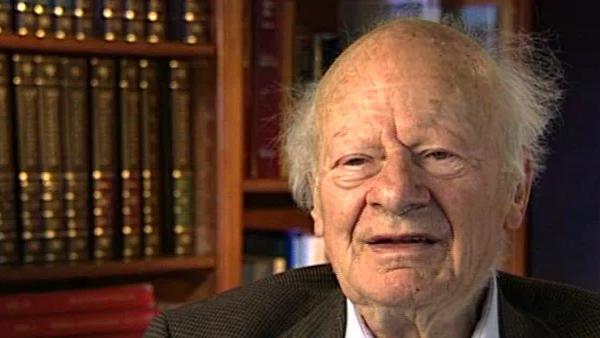NEXT STORY

Thinking about mesons at the Shelter Island Conference
RELATED STORIES

NEXT STORY

Thinking about mesons at the Shelter Island Conference
RELATED STORIES


|
Views | Duration | |
|---|---|---|---|
| 101. Joining the President's Science Advisory Committee | 382 | 02:02 | |
| 102. The Shelter Island Conference | 818 | 02:47 | |
| 103. The Lamb shift | 1 | 2300 | 02:42 |
| 104. Calculating the Lamb shift | 4065 | 03:31 | |
| 105. Feynman, Weisskopf and Schwinger's calculations of the Lamb shift | 1816 | 03:53 | |
| 106. Feynman's new ideas at The Pocono Conference | 1821 | 01:17 | |
| 107. Freeman Dyson: An excellent graduate | 1 | 2499 | 04:18 |
| 108. Presenting Schwinger, Feynman and Dyson's ideas at Birmingham | 1297 | 01:42 | |
| 109. Michel Baranger and Gerald Brown's work in the Lamb shift | 842 | 02:12 | |
| 110. Thinking about mesons at the Shelter Island Conference | 532 | 02:23 |


It was only a first approximation that Feynman and Schwinger had done, and now the question was what would happen when you took into account [the] interaction of two quanta with the electron. We had a very good graduate student from France, Baranger, whom we asked - both Feynman and I asked him - to investigate the effects of a second order in... in the fine structure constant. And indeed Baranger managed to do this and it turned out that the second order was really quite big, it added about 10MHz to the first order, and I think we wrote a paper, all three of us together.
[Q] And Lamb shifts have always been a little bit close to your heart, because you then also worry about Lamb shifts and heavy atoms, and students do work for you on trying to describe relativistically how you describe the constitution of atoms, taking into account...
Relativity and quantum electrodynamics. Yes, I did, but the person who really did it to completion was Gerald Brown in Birmingham working with Peierls.
[Q] Right.
The late German-American physicist Hans Bethe once described himself as the H-bomb's midwife. He left Nazi Germany in 1933, after which he helped develop the first atomic bomb, won the Nobel Prize in Physics in 1967 for his contribution to the theory of nuclear reactions, advocated tighter controls over nuclear weapons and campaigned vigorously for the peaceful use of nuclear energy.
Title: Michel Baranger and Gerald Brown's work in the Lamb shift
Listeners: Sam Schweber
Silvan Sam Schweber is the Koret Professor of the History of Ideas and Professor of Physics at Brandeis University, and a Faculty Associate in the Department of the History of Science at Harvard University. He is the author of a history of the development of quantum electro mechanics, "QED and the men who made it", and has recently completed a biography of Hans Bethe and the history of nuclear weapons development, "In the Shadow of the Bomb: Oppenheimer, Bethe, and the Moral Responsibility of the Scientist" (Princeton University Press, 2000).
Tags: Lamb shift, Michel Baranger, Richard Feynman, Julian Schwinger, Gerald Brown, Rudolf Peierls
Duration: 2 minutes, 13 seconds
Date story recorded: December 1996
Date story went live: 24 January 2008